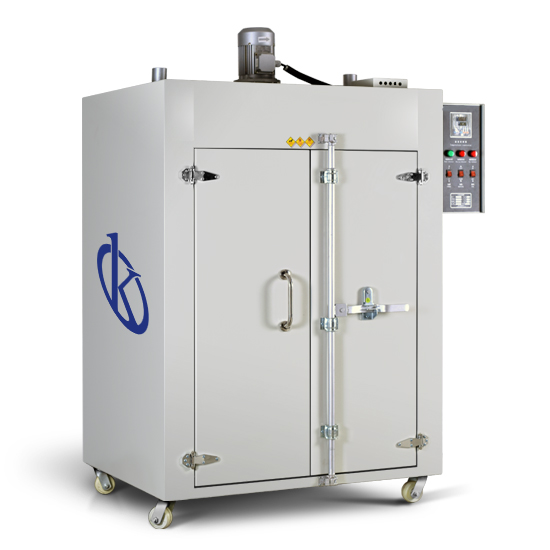The dryer is a piece of equipment used to dry and sterilize glass and metal containers in the laboratory. It is also known as a drying oven. Manufacturers have essentially developed two types of Oven: those that operate by natural convection and those that operate by forced convection. Ovens generally operate between room temperature and 350°C.
What is the purpose of an oven?
The dryer is used to sterilize or dry glass and metal used in examinations or tests, which are carried out by the laboratory and come from the washing section, where they are sent after being used in a procedure. The sterilization performed in the Oven is called dry heat and is carried out at 180°C for 2 hours; the glassware, being heated in air at high temperature, absorbs moisture and eliminates the possibility of any biological activity being maintained due to the high temperatures and times used.
What are the principles of your operation?
Drying ovens generally consist of two chambers: an inner and an outer. The inner chamber is made of aluminum or stainless steel, with excellent heat-transfer properties; it features a set of stainless steel wire shelves or racks, so that air can circulate freely, and is used to hold items that need to be dried or sterilized by dry heat. It is insulated from the outer chamber by an insulating material that maintains high-temperature conditions internally and retards heat transfer to the outside.
The outer chamber is made of sheet steel, covered with a protective film of electrostatic paint. Internal heat is generated by sets of electrical resistors, which transfer thermal energy to the inner chamber. These resistors are located at the bottom of the oven. Heat inside the internal chamber is transferred and distributed by natural convection or forced convection (oven with internal fans).
What services does this computer require?
To operate, the dryer requires the following items:
- Provide a strong, level work surface.
- Provide at least 5 cm of clearance around the oven, and space to place the material to be processed in the equipment.
- Install an electrical socket in good condition with a properly sized earthed pole, to supply the electrical power consumed by the oven, which must comply with the national or international electrical regulations used by the laboratory and must be no more than 1 m from the equipment. The standard voltage used is 110 V or 220 V/60 Hz.
- Check that the electrical circuit has the necessary protective devices to ensure an adequate power supply.
What does it take to operate it?
A number of precautions need to be taken to ensure that the oven works properly. The most important are as follows:
- Do not use flammable or explosive materials or substances in the oven.
- Avoid interior spills of acidic solutions or solutions that form corrosive vapors, to prevent corrosion of interior surfaces and shelves.
- Use personal protective equipment (insulated gloves, safety glasses and tongs when placing or removing substances or components inside the drying oven).
How should your QC be?
Quality control in ovens is a bit tricky, as the dry heat sterilization technique has temperature and time as critical parameters. Spores of Bacillus subtilis, Niger variety, are generally used as biological indicators and must be incubated for several hours after the sterilization process. The initial spore load of the biological indicator varies between 5 x 105 and 1 x 106. Its effectiveness depends on heat diffusion, the amount of heat available and heat loss. Microbicidal action is conditioned by the presence of organic matter or dirt in the article. Dry heat sterilization should be limited to materials that cannot be sterilized in autoclaves.
Knowing that this equipment is one of the key elements of the laboratory, Kalstein offers you sophisticated drying ovens. That’s why we invite you to take a look at one of our available models. HERE

